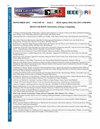Selection of Power Semiconductor Devices for a Standalone System based on Power Loss Analysis
IF 1.3
4区 工程技术
Q3 COMPUTER SCIENCE, INFORMATION SYSTEMS
引用次数: 0
Abstract
This paper presents a comprehensive methodology for the selection of power semiconductor devices in a standalone photovoltaic (PV)-battery system (SPBS) based on power loss analysis. The SPBS configuration is modeled analytically, and the waveforms for the system are obtained in a Hardware-In-the-Loop (HIL) and by simulation environment using Matlab. The study focuses on identifying the most cost-effective power semiconductor devices by assessing power loss at three distinct operating points. The algorithm evaluates losses in each component, facilitating the selection of optimal devices for enhanced system performance. The evaluation is performed for different operational modes, incorporating worst-case scenarios for current and voltage, providing a robust analysis of system behavior. By emphasizing the importance of power loss analysis in isolated PV systems, this research contributes to the advancement of energy efficiency in SPBS. The proposed methodology enables the identification of power semiconductor devices experiencing the highest losses, aiding in the selection of components that minimize overall losses and maximize energy utilization from PV panels and batteries.基于功率损耗分析为独立系统选择功率半导体器件
本文介绍了一种基于功率损耗分析的独立光伏电池系统(SPBS)中功率半导体器件选择的综合方法。对 SPBS 配置进行了分析建模,并在硬件在环 (HIL) 和使用 Matlab 的仿真环境中获得了系统波形。研究重点是通过评估三个不同工作点的功率损耗,确定最具成本效益的功率半导体器件。该算法评估了每个组件的损耗,有助于选择最佳器件以提高系统性能。评估针对不同的工作模式进行,包括电流和电压的最坏情况,从而对系统行为进行稳健的分析。通过强调隔离光伏系统中功率损耗分析的重要性,这项研究有助于提高 SPBS 的能效。所提出的方法能够识别出损耗最大的功率半导体器件,有助于选择能最大限度减少总体损耗并最大限度提高光伏电池板和电池能量利用率的元件。
本文章由计算机程序翻译,如有差异,请以英文原文为准。
求助全文
约1分钟内获得全文
求助全文
来源期刊

IEEE Latin America Transactions
COMPUTER SCIENCE, INFORMATION SYSTEMS-ENGINEERING, ELECTRICAL & ELECTRONIC
CiteScore
3.50
自引率
7.70%
发文量
192
审稿时长
3-8 weeks
期刊介绍:
IEEE Latin America Transactions (IEEE LATAM) is an interdisciplinary journal focused on the dissemination of original and quality research papers / review articles in Spanish and Portuguese of emerging topics in three main areas: Computing, Electric Energy and Electronics. Some of the sub-areas of the journal are, but not limited to: Automatic control, communications, instrumentation, artificial intelligence, power and industrial electronics, fault diagnosis and detection, transportation electrification, internet of things, electrical machines, circuits and systems, biomedicine and biomedical / haptic applications, secure communications, robotics, sensors and actuators, computer networks, smart grids, among others.
 求助内容:
求助内容: 应助结果提醒方式:
应助结果提醒方式:


